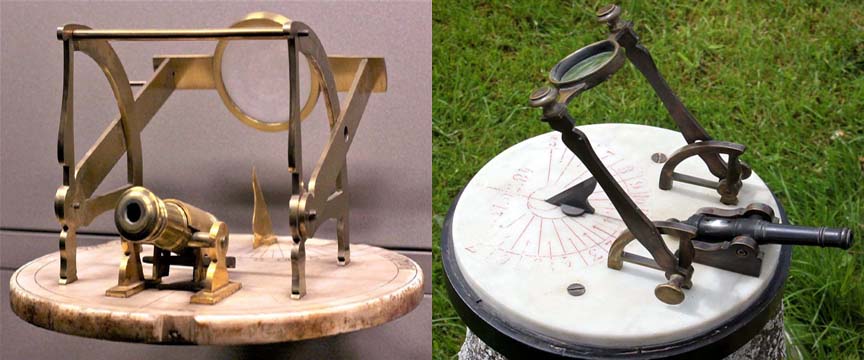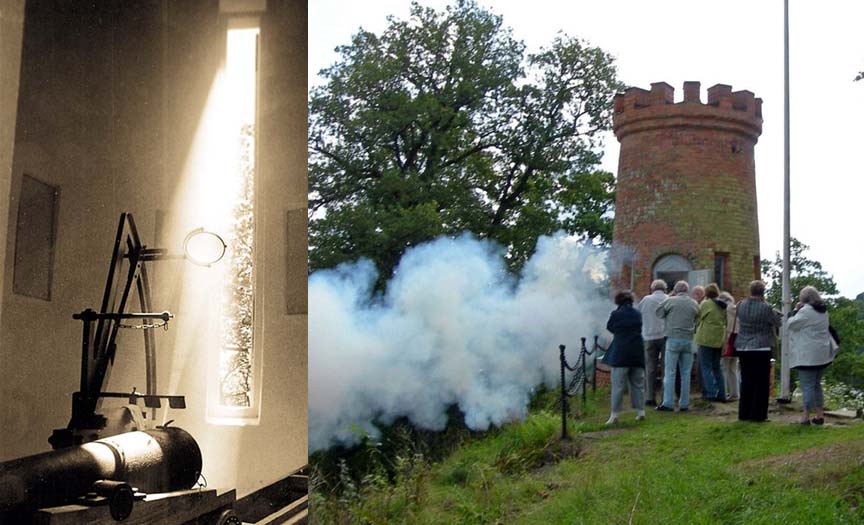In days of old when, knights were bold, and watches werenít invented, noon was the most important time of day.
High noon didnít vary by more than a few seconds(30 max) from day to day, so it was the only reliable reference.
Quote:
Often harbors would announce noon by firing guns and cannons, or by dropping time balls, so that ships could readjust their
clocks before they went away to sea. Noon was also signaled by observatories for the benefit of astronomers and the general
public. Some observatories still do it.
|

Quote:
Sometime in the early 1600s in Europe, a new time signaling device came into fashion. It was a sundial equipped with a tiny
cannon. A magnifying glass hovered above the canon, and at noon, the glass trained a concentrated beam of sunlight on a
charge of gunpowder on the touchhole, igniting the gunpowder and producing an audible bang. This device is known by
various names such as sundial cannon, sun cannon, sundial gun, noon cannon and meridian cannon
|

Some were set up in the town square or park, smaller ones on estates or farms to call the help for lunch, and some were as
big as a Navy cannon.
Today, the only functioning sundial cannon resides in Ňtvidaberg, Sweden, housed inside a red brick tower, installed in 1853,
then disused for a long time when reliable clocks appeared. It was restored in 1986, the 6-pound cannon is fired everyday at
1 PM, from May to September. Itís fired by the Sun except on cloudy days Sun Gunner lights a match.
Link